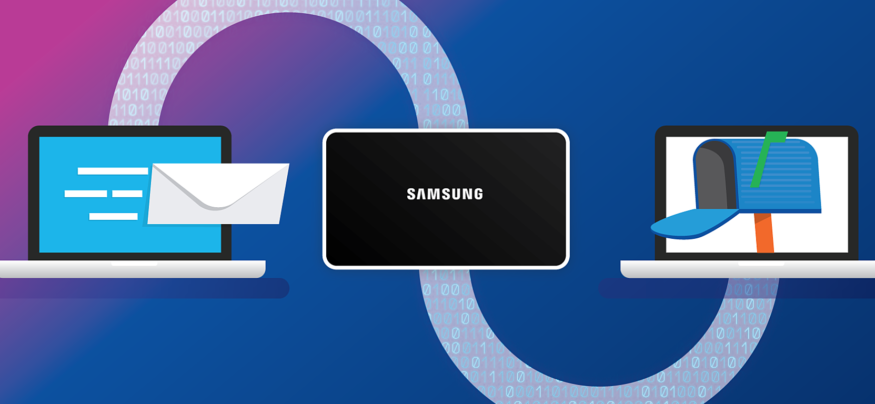The latest in flash storage technologies, M.2 SSDs with the PCI Express (PCIe) interface, have the potential to be the fastest flash drives available, but only if they’re fully supported by the system they’re installed in. The new drives, like the Samsung 950 Pro, use a combination of the M.2 form factor and the 4x PCIe interface to create a drive that’s compact and efficient, yet capable of speeds five times greater than SSDs that use the SATA or SAS interface. Getting the best use of these drives requires two components — the correct physical interface and the hardware specification. The slots that M.2 SSDs fit into can support either a SATA interface that’s electronically compatible with the older style 2.5-inch drives, or it can support a 1x, 2x or 4x PCIe interface, which allows for higher speeds.
Getting the Full Benefit of NVMe Drives
Taking full advantage of all that NVMe drives offer requires a 4x PCIe connection. This can be connected through a PCIe slot on a desktop PC motherboard, or via an NVMe slot on the motherboard, which is available on a number of new laptops like the Eurocom Sky X9. These laptops use the slots to save space, since unlike desktops, most laptops don’t have a full-sized PCIe slot at all, let alone one to spare. Plug one or two high-speed drives into the M.2 PCIe 4x slots to access the full speeds the drives are capable of. If you set two drives up in a RAID 0 configuration, you can double that to over 5 gigabytes per second (GBps). Note that this is not the typical 6 Gbps speed quoted for the SATA interface — that is gigabits, while the M.2 PCIe drives are capable of over 2.5 gigabytes per second (GBps), or 20 Gbps.
Because desktop PC motherboards typically have a number of PCIe slots that can accept M.2 PCIe drives with an inexpensive connector, many manufacturers haven’t yet added specialized M.2 PCIe slots. Laptops, on the other hand, can make good use of the much smaller M.2 spec drives, and therefore have the additional slots. Ironically, this means that for the first time, laptops may be more likely to have the highest-performing SSDs available in them. These drives also require less power and produce less heat than 2.5-inch spinning disc hard drives, extending the amount of time the laptops can run on their batteries.
For a real-world feel, a recent demo showed a new laptop in four versions — a single 2.5-inch 7200 RPM HDD, a single 2.5-inch SATA SSD, a single M.2 PCIe 4x drive and two M.2 PCIe 4x drives configured in RAID 0. Boot times were 1:32 for the HDD, 0:36 for the SATA SSD, 0:09 for the single M.2 PCIe drive,and 0:05 for the two M.2 PCIe drives in RAID 0. Opening a large (25GB) file in Photoshop went from 0:48 for the HDD, to 0:16 with one SSD, to 0:04 for the single M.2, and finally to 0:02 for the dual M.2 drives. While not every application or system might see these kinds of numbers, the results are telling — a performance far better than the best SATA SSDs, albeit at a higher cost.
SSDs can improve processing times and increase efficiency across a variety of industries. Learn how one Grammy-nominated music producer used SSDs to improve his creative process here.







